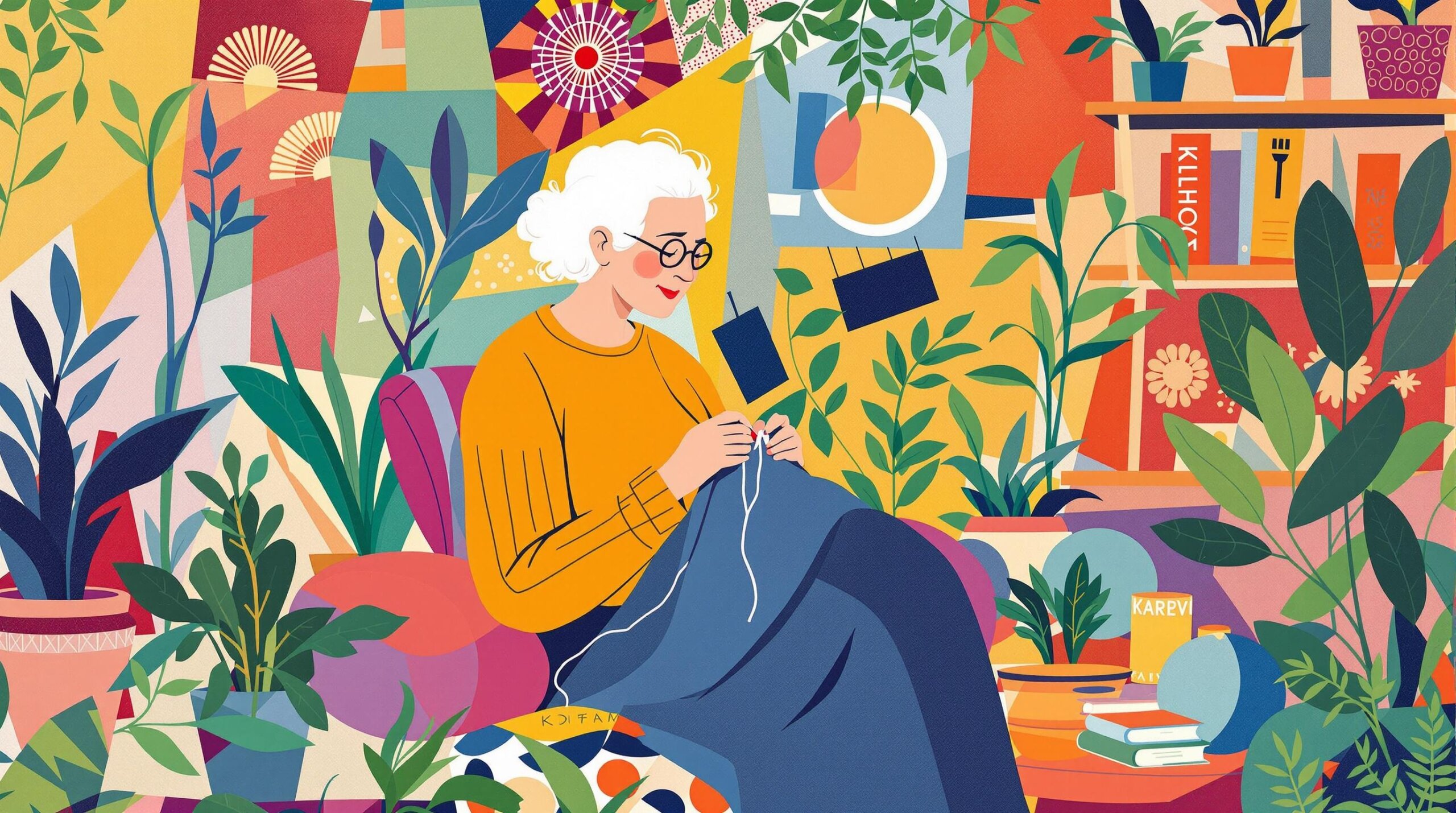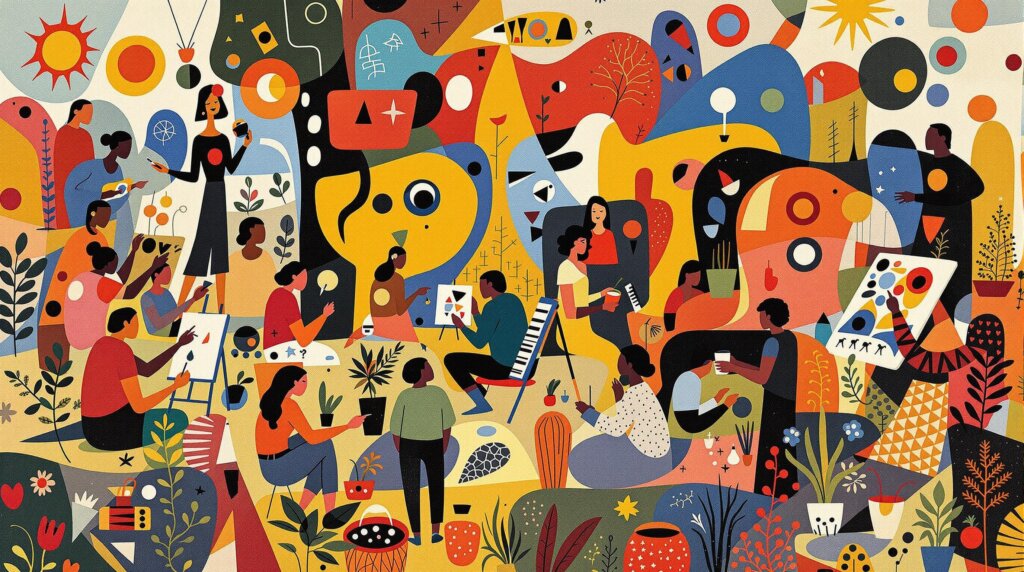The Creative-Longevity Connection: Understanding the Basics
How Creative Hobbies Impact Life Expectancy
Want to live longer? Pick up a paintbrush, learn an instrument, or start writing poetry. Recent research reveals that engaging in creative activities doesn’t just make life more enjoyable – it actually extends it. A groundbreaking study from University College London tracked 7,500 adults over 14 years and found that those who regularly participated in creative activities were 31% less likely to die during the study period.
The Science Behind Creativity and Aging
Creative activities stimulate multiple brain regions simultaneously, promoting neuroplasticity – the brain’s ability to form new neural connections. This mental flexibility helps maintain cognitive function as we age. Additionally, creative pursuits reduce stress hormones like cortisol while increasing beneficial compounds such as dopamine and serotonin. Think of creativity as a full-body workout for your brain.
Historical Evidence and Modern Research
The link between creativity and longevity isn’t new. Throughout history, artists, musicians, and writers have often lived well beyond their era’s average life expectancy. Pablo Picasso painted until age 91, Giuseppe Verdi composed until 85, and Claude Monet created his famous water lily series in his 80s. Modern science now explains why: creative activities enhance both physical and mental resilience.
Common Misconceptions
Many people wrongly believe they need artistic talent to benefit from creative activities. Research shows it’s the process, not the product, that matters. Another myth is that creative pursuits are merely leisure activities with no health benefits. In fact, engaging in creative hobbies can lower blood pressure, reduce inflammation, and improve immune function.
Key Statistics and Research Findings
The numbers are compelling. Studies show that adults who participate in creative activities at least once a week have a 63% lower risk of cognitive decline. Research from the Mayo Clinic found that people who engaged in artistic activities in middle and old age were 73% less likely to develop memory problems. These benefits appear regardless of other lifestyle factors.

Modern Perspectives on Creativity and Health
Different Types of Creative Activities and Their Benefits
Various creative pursuits offer unique health advantages. Visual arts improve hand-eye coordination and spatial awareness. Music enhances cognitive function and memory. Writing strengthens emotional processing and reduces stress. Dance combines creativity with physical exercise, offering dual benefits for brain and body health.
The Social Aspect of Creative Activities
Group creative activities like choir singing, community theater, or art classes provide social connection – another crucial factor in longevity. Research from Harvard Medical School shows that strong social ties can increase lifespan by up to 50%. Creative groups offer both artistic stimulation and social support.
The Mechanisms Behind Creativity and Longevity
Neurological Benefits
Creative activities trigger multiple beneficial processes in the brain. They increase BDNF (Brain-Derived Neurotrophic Factor), a protein that supports neuron growth and survival. This strengthens cognitive reserve – the brain’s resilience against age-related decline and disease. Regular creative practice also enhances working memory and processing speed.
Psychological Impact
Creative pursuits provide powerful psychological benefits that contribute to longevity. They reduce anxiety and depression, improve self-esteem, and enhance emotional regulation. The state of ‘flow‘ experienced during creative activities reduces stress and promotes mental well-being. These psychological benefits directly impact physical health through reduced inflammation and improved immune function.
Physical Health Effects
Engaging in creative activities has measurable effects on physical health. Studies show reduced blood pressure, lower heart rate, and decreased stress hormone levels during creative sessions. Even sedentary creative activities improve fine motor skills and hand dexterity, which often decline with age.
Practical Implementation: Starting Your Creative Journey
- Begin with simple, enjoyable activities that interest you
- Set aside dedicated time for creative practice
- Join community classes or groups for social interaction
- Experiment with different mediums and styles
- Focus on the process rather than the outcome
- Document your progress to stay motivated
- Create a dedicated space for your creative work
- Share your creative journey with others
- Take breaks when needed but maintain consistency
- Celebrate small achievements along the way
Best Creative Activities for Longevity
- Drawing and painting (improves visual processing and fine motor skills)
- Playing musical instruments (enhances cognitive function and memory)
- Writing (strengthens emotional processing and communication)
- Dancing (combines creativity with physical exercise)
- Photography (sharpens observation skills and spatial awareness)
- Pottery and sculpture (develops tactile sensitivity and coordination)
- Singing (improves respiratory function and emotional expression)
- Gardening (combines creativity with light physical activity)
- Digital art (keeps tech skills sharp while fostering creativity)
- Crafting (enhances problem-solving and manual dexterity)
Integrating Creativity into Daily Life
Creative activities don’t require massive time commitments. Even 15 minutes daily can provide benefits. The key is consistency and enjoyment. Start by identifying pockets of time in your schedule – perhaps early morning, lunch breaks, or before bed. Replace passive activities like watching TV with active creative pursuits.
Measuring Progress and Benefits
Track your creative journey and its effects on your well-being. Notice improvements in mood, energy levels, and cognitive function. Keep a journal of your creative activities and how they make you feel. Regular assessment helps maintain motivation and identifies which activities provide the most benefit.
Future Research and Implications
Scientists continue to uncover new connections between creativity and longevity. Current research focuses on how different creative activities affect specific aspects of health and aging. Studies are examining the potential of creative pursuits in preventing or slowing cognitive decline, particularly in conditions like dementia and Alzheimer’s.
The evidence linking creative activities to increased longevity is compelling and growing stronger. Whether through visual arts, music, writing, or other creative pursuits, engaging in regular creative practice offers significant benefits for both lifespan and healthspan. The key is finding activities that bring personal enjoyment and maintaining consistent engagement. By incorporating creativity into our daily lives, we invest in our long-term health and well-being. Remember – it’s never too late to start a creative hobby, and the benefits begin immediately.



